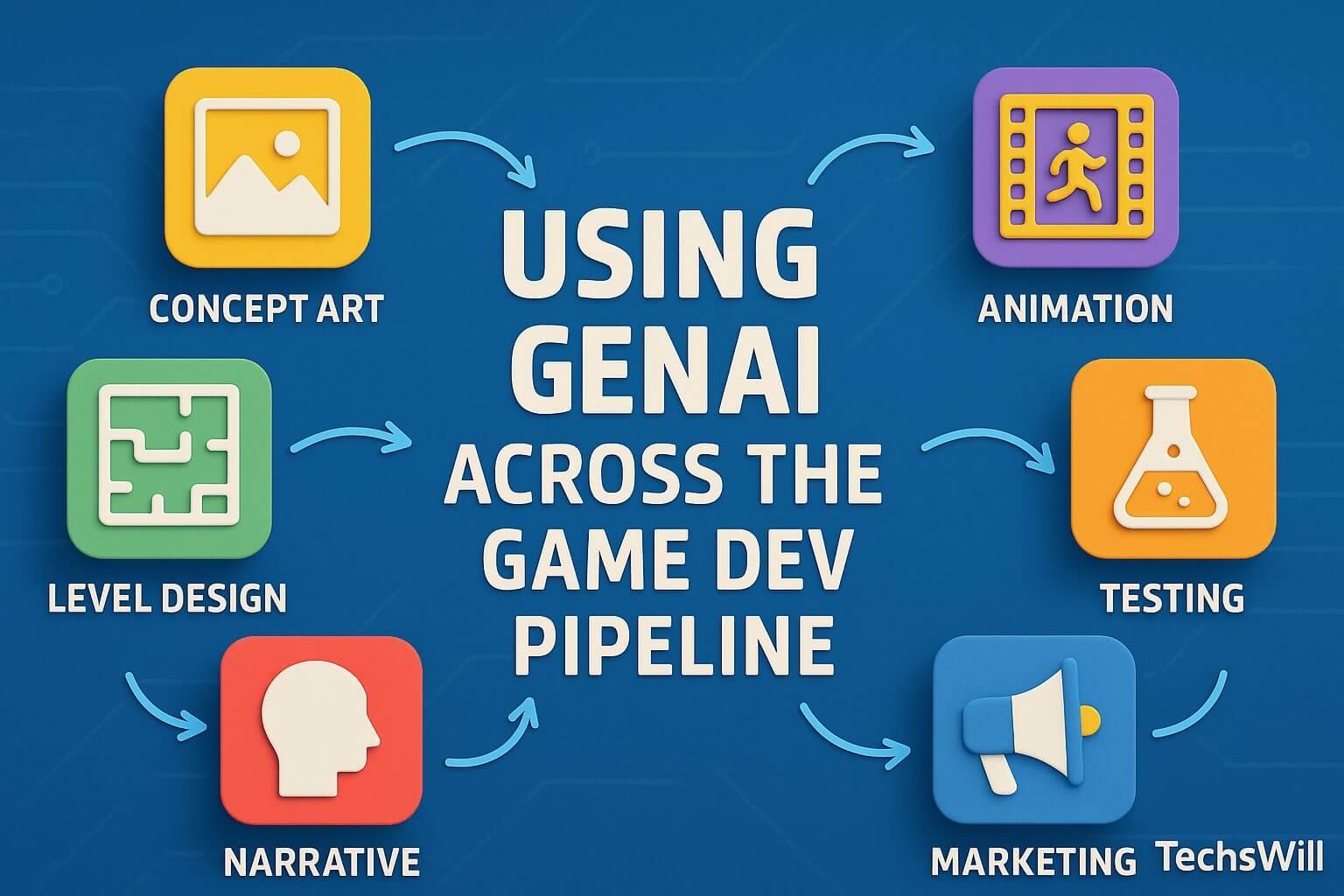AI is no longer just a productivity trick. In 2025, it’s a strategic layer across the entire game development process — from concepting and prototyping to LiveOps and player retention.
Studios embracing GenAI not only build faster — they design smarter, test deeper, and launch with more clarity. This guide shows how to integrate GenAI tools into every team: art, design, engineering, QA, narrative, and marketing.
🎨 Concept Art & Visual Development
AI-powered art tools like Scenario.gg and Leonardo.Ai enable studios to:
- Generate early style exploration boards
- Create consistent variants of environments and characters
- Design UI mockups for wireframing phases
💡 Teams can now explore 10x more visual directions with the same budget. Art directors use GenAI to pitch, not produce — and use the best outputs as guides for real production work.
🧱 Level Design & Procedural Tools
Platforms like Promethean AI or internal scene assembly AIs let designers generate:
- Greyboxed layouts with room logic
- Environment prop population
- Biome transitions and POI clusters
Real Studio Use Case:
A 20-person adventure team saved 3 months of greyboxing time by generating ~80% of blockouts via prompt-based tools — then polishing them manually.
AI doesn’t kill creativity. It just skips repetitive placement and lets designers focus on flow, pacing, and mood.
🧠 Narrative & Dialogue
Tools:
- Inworld AI – Create personality-driven NPCs with memory, emotion, and voice
- Character.ai – Generate custom chat-based personas
- Custom GPT or Claude integrations – Storyline brainstorming, dialog variant generation
What It Enables:
- Questline generation with alignment trees
- Dynamic NPCs that respond to player behavior
- Script localization, transcreation, and tone matching
🧪 QA, Playtesting & Bug Detection
Game QA is often underfunded — but with AI-powered test bots, studios now test at scale:
- Simulate hundreds of player paths
- Detect infinite loops or softlocks
- Analyze performance logs for anomalies
🧠 Services like modl.ai simulate bot gameplay to identify design flaws before real testers ever log in.
🎯 LiveOps & Player Segmentation
AI is now embedded in LiveOps workflows for:
- Segmenting churn-risk cohorts
- Designing time-limited offers based on player journey
- Auto-generating mission calendars & A/B test trees
Tools like Braze and Airbridge now include GenAI copilots to suggest creative optimizations and message variants per player segment.
📈 Marketing & UA Campaigns
Creative Automation:
- Generate ad variations using Lottie, Playable Factory, and Meta AI Studio
- Personalize UGC ads for geo/demographic combos
- Write app store metadata + SEO variants with GPT-based templates
Smart Campaign Targeting:
AI tools now simulate LTV based on early event patterns — letting UA managers shift spend across creatives and geos in near real time.
🧩 Studio-Wide GenAI Integration Blueprint
| Team | Use Case | Tool Examples |
|---|---|---|
| Art | Concept iteration | Scenario.gg, Leonardo.Ai |
| Design | Level prototyping | Promethean AI, modl.ai |
| Narrative | Dialogue branching | Inworld, GPT |
| QA | Bot testing | modl.ai, internal scripts |
| LiveOps | Segmentation | Braze AI, CleverTap |
| Marketing | Ad variants | LottieFiles, Meta AI Studio |
📬 Final Word
GenAI isn’t a replacement for developers — it’s a force multiplier. The studios that win in 2025 aren’t the ones who hire more people. They’re the ones who free up their best talent from grunt work and give them tools to explore more ideas, faster.
Build AI into your pipeline. Document where it saves time. And create a feedback loop that scales — because your players will notice when your team can deliver better, faster, and smarter.

